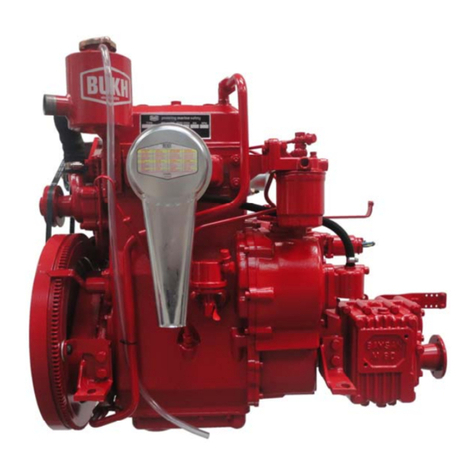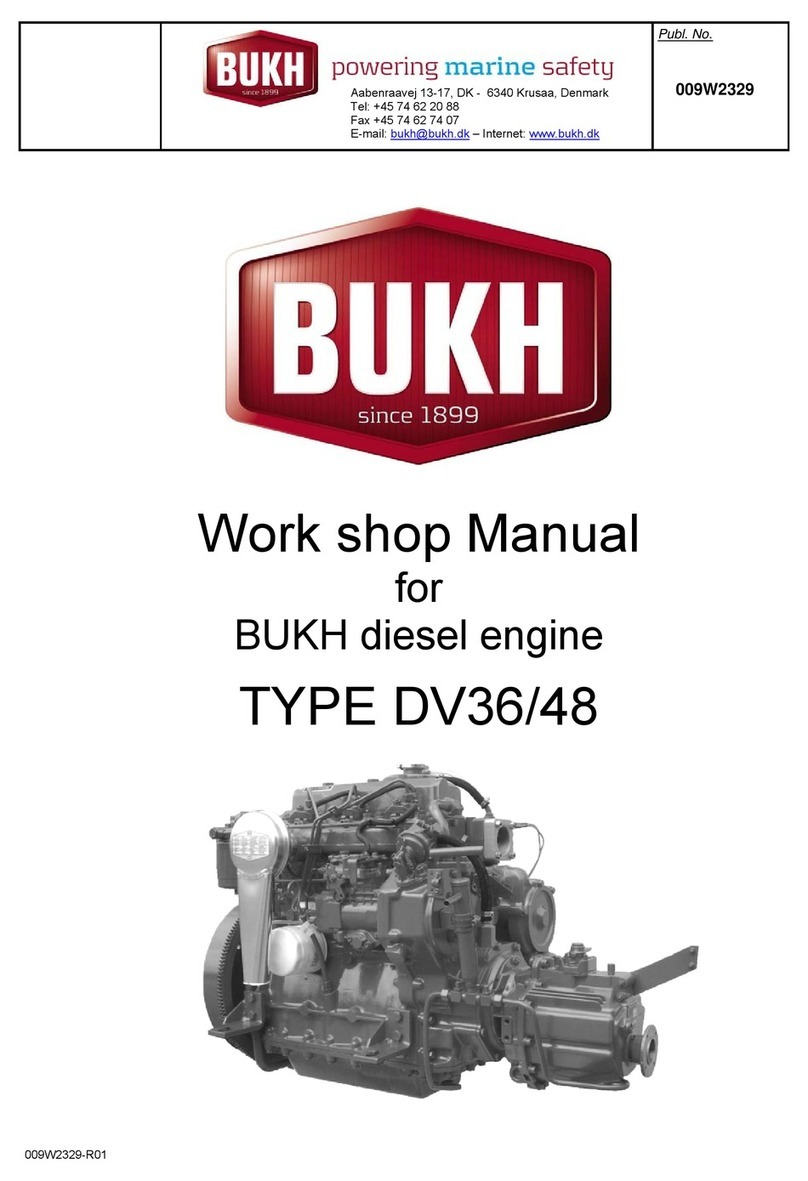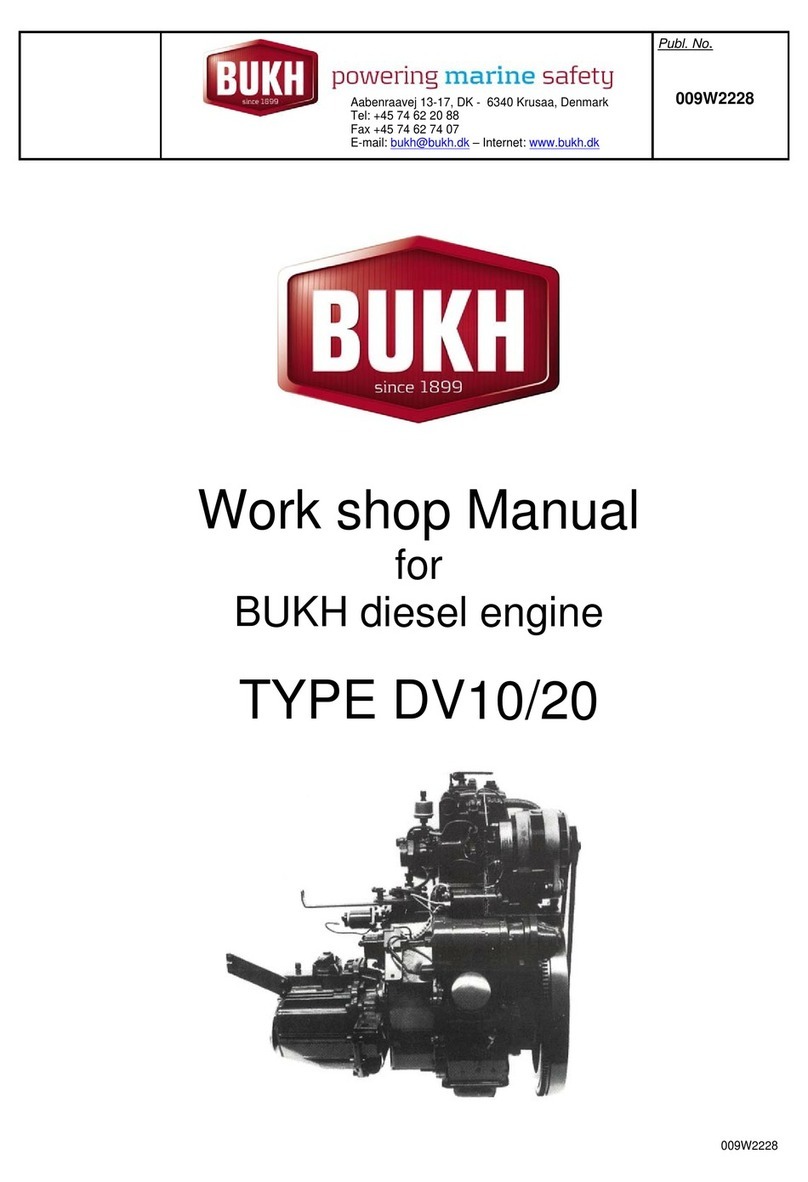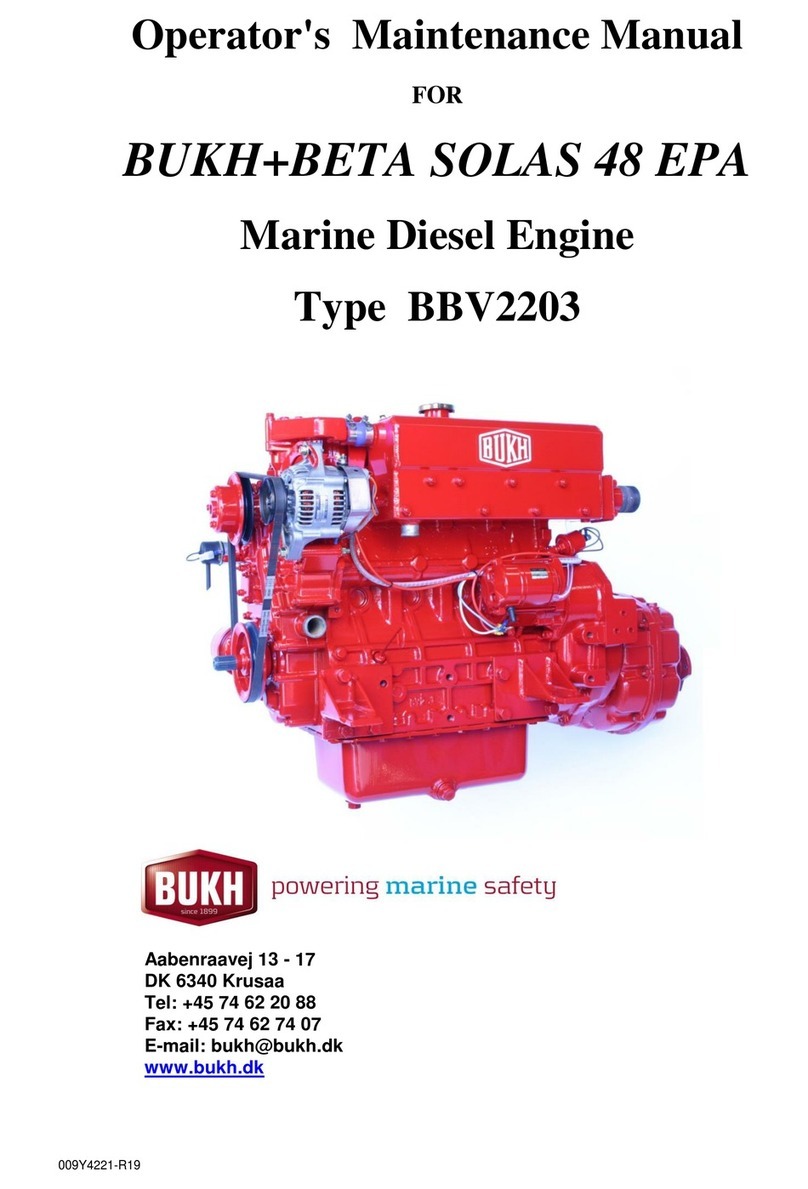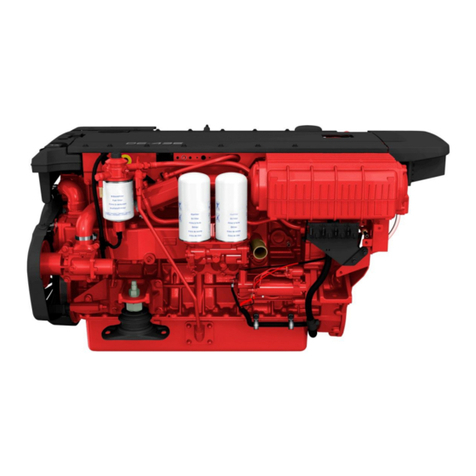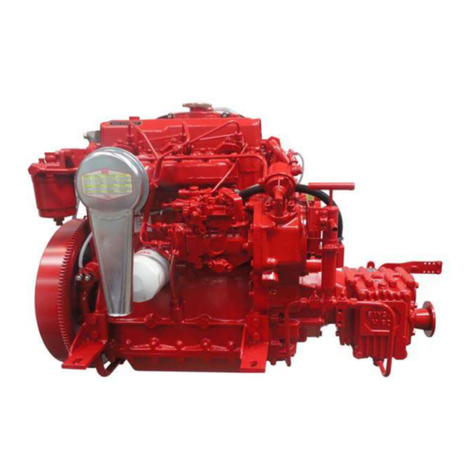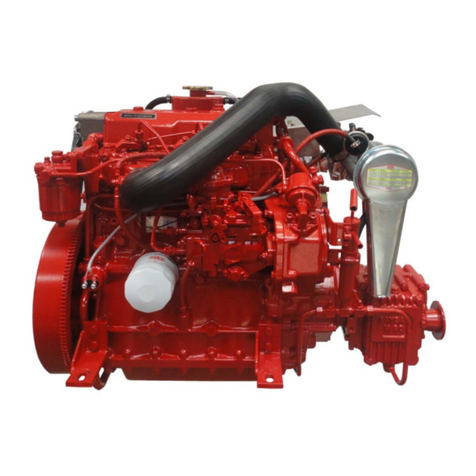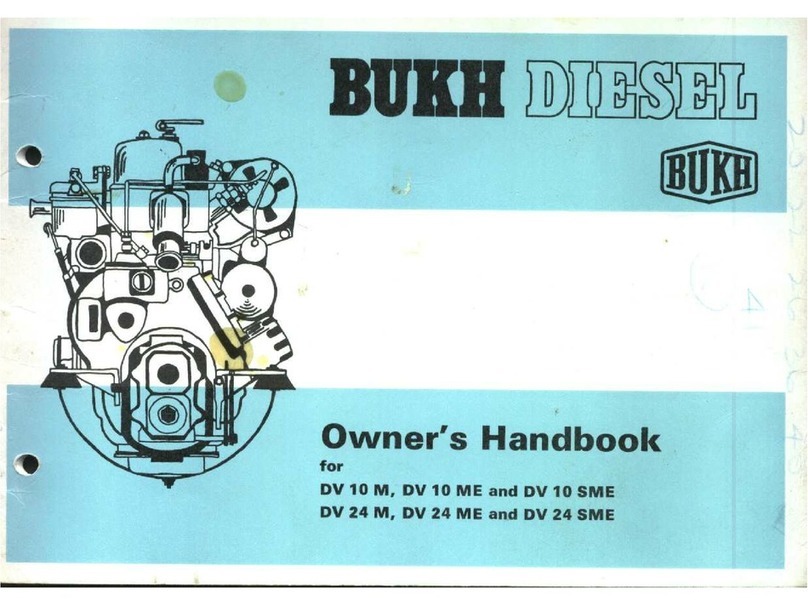
Callesen Diesel Page 3 of 12 Sheet No. 7-94-2A
The alarm device should be connected to generator (not to the batteries with handswitch) by a
contact relay which will cause only a faint current to pass through the contacts of the pressure
control and the thermostat, as otherwise the contacts here would soon be destroyed. If the alarm
device is giving signal the engine must of course be stopped immediately and the fault must be
found and corrected.
The grease cups must be tightened up, and of course it should be checked whether all pipings and
other connections are tight and that the engine is getting cooling water.
If there is a leakage between cylinder and cylinder head which may be due to some nuts having
been loosened when mounting stiffeners on the engine, the engine must be stopped and the nuts of
the cylinder heads be retightened by means of the ring striker wrench supplied and a heavy
blacksmiths's hand hammer. To ensure that the cylinder heads are tightened straightly, check by
means of a feeler if the free space between the cylinder and the cylinder head in each corner is ex-
actly equal. Before measuring, paint or putty, if any, must be scratched away to ensure that the
measuring surfaces are completely clean.
After having checked that everything is in order after the first start and when the engine has been
running until it has become warm (about 40ºC), it can be loaded gradually, so that full power is
reached about 1 hour after having reached operating temperature, which is about 65-70ºC (the
cooling water system is normally supplied with a thermostat which is acting when the temperature
becomes too high, about 90ºC; it is connected to the same alarm device as the lubricating oil pres-
sure control).
The temperature of the turbocharger should be checked on the thermometer. It should not be es-
sentially warmer than the water outlet pipe on the engine.
The marine engines are as standard equipped with hydraulical clutch and hydraulically operated re-
versing device for the propeller blades. The propeller is engaged by pushing the clutch handle in the
middle of the instrument box completely forward, and the propeller is given pitch to "Ahead" by
pushing the handle on the right hand side of the control desk forward.
When the engine is operating at full load, which means at 425 rpm (the number of revolutions is
stamped on the factory's type label), the regulating rods in the fuel pumps should be able to move
freely in the longitudinal direction; can be read on the fuel pump indicator (is mounted as standard on
all engines above 300 HP), but only about 1 - 2 mm in the direction in which the quantity of the fuel
oil is increased; if the regulating rod is going completely to block, there will be no control of the
output of the engine. However, if this happens, the engine is overloaded and should have the
propeller pitch reduced by pulling the propeller pitch lever astern until the regulating rod is free.
Thereafter fasten the limiting bolts found in the reversing tower on top of the clutch shield, so that the
engine cannot be overloaded neither on "Ahead" nor on "Astern".
The charging of the starting air receivers is carried out by means of the charging valve, which is
placed on the aftermost cylinder cover. The valve is opened by turning the valve handle to the left
until the stop, about 1/2 revolution. Then open the cock on the starting air receiver which has to be
charged with air. After having finished pumping, close the valve on the starting air receiver first and
thereafter the charging valve on the engine. When closing the latter valve, a hissing sound will be
heard; this is only release of air from the charging pipe. Every time after having finished charging, it
is necessary after a little while to retighten the charging valve on the engine, because the valve
spindle is heated during the charging procedure, and when cooling down it contracts and maybe
slackens. If the valve is not shut properly, sooting may cause the spindle to stick.

